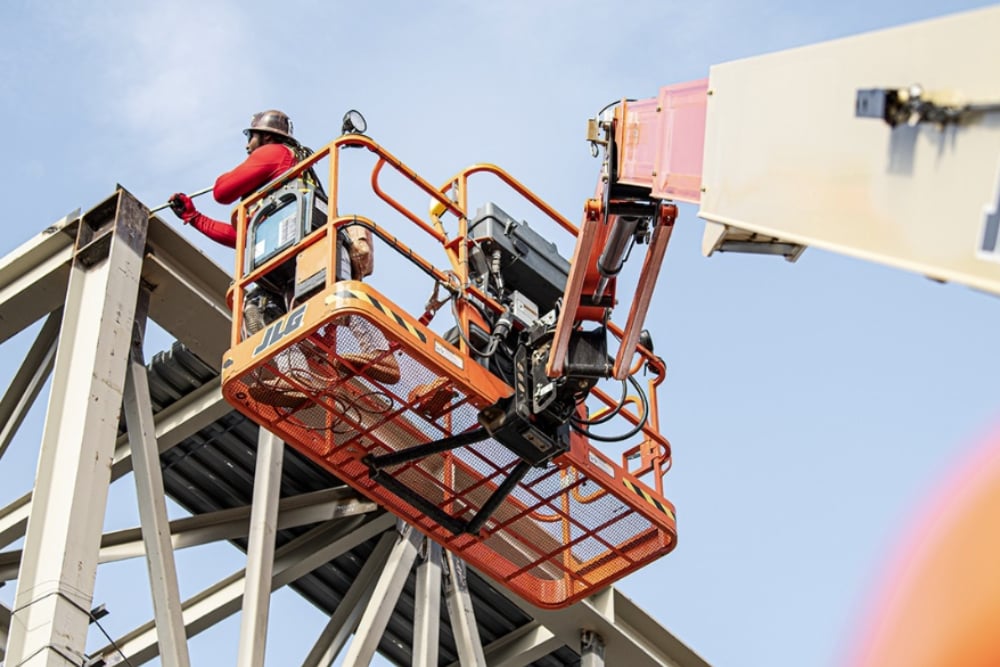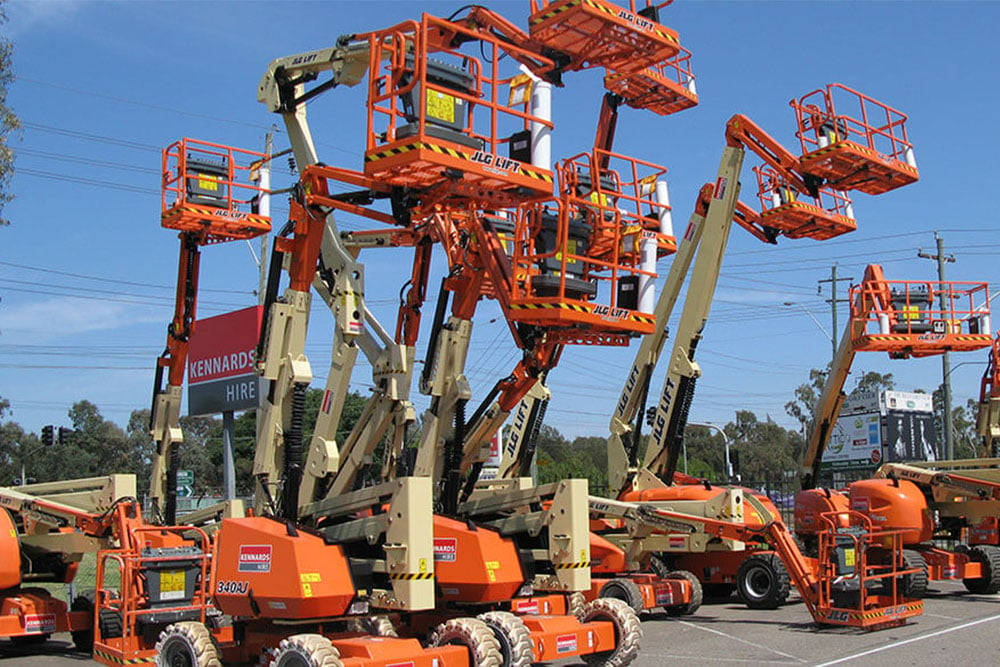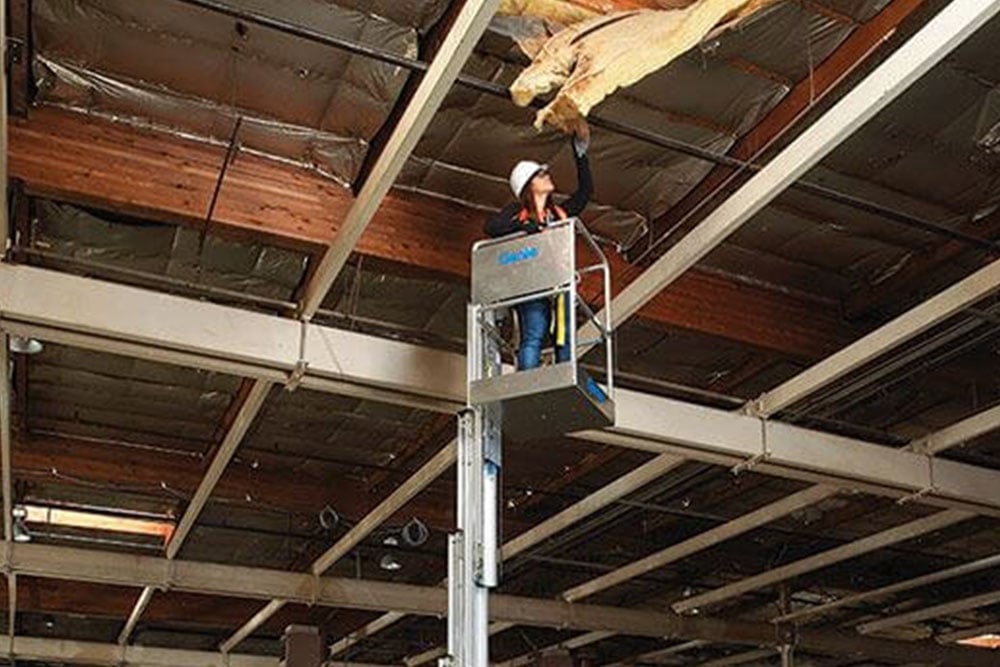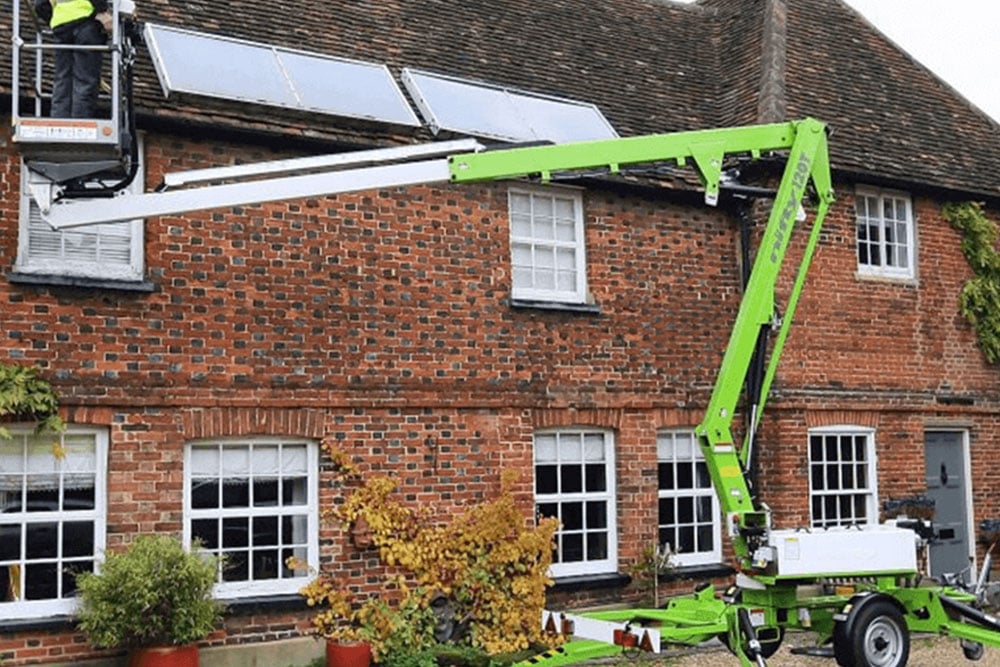6 Trends Shaping the Access Industry in 2025
Trade Advice
As the rental equipment market continues to shift and evolve in 2025, the demand for connectivity, autonomy, productivity, safety, labour challenges and compliance will shape the access industry's future.
Long term strategic supplier of Kennards Hire and one of the world’s largest manufacturers of access equipment, JLG, shared with Kennards Hire what they believe will be the global trends in 2025.
In detail here’s a breakdown of the critical issues impacting these topics:
1. Connectivity
As smart construction technologies evolve, access equipment will become more integrated with the broader digital ecosystem on job sites. Rental companies and contractors will increasingly rely on advanced fleet management systems to become more efficient in their daily operations by optimizing equipment availability, scheduling and servicing. This trend will be enhanced by cloud-based platforms that enable owners to access data and manage fleets remotely, driving down costs and increasing utilization.
- Remote Troubleshooting Over-the-air troubleshooting, machine updates, and other wireless capabilities through apps or cloud-based platforms mean that service tech can make fewer trips to the job site to get a machine up and running.
- Data Analytics: Enables real-time data about machine usage, location, diagnostics and maintenance. Equipment monitoring allows rental companies to track usage, manage maintenance schedules and predict equipment failures before they occur. In 2025, IoT-driven data will help companies optimize fleet management, reduce downtime, increase asset utilization and improve customer satisfaction.
- Fleet Monitoring: As part of the broader trend toward digitalisation, more access equipment will come with remote monitoring capabilities. Fleet managers can monitor performance via smartphones, tablets or desktop computers with access to cloud-based platforms.
2. Autonomy
Integrating autonomous access equipment on construction sites is coming. Although we don’t see common use of these machines yet in 2025, contractors will begin to consider different ways that machines that can navigate job sites and/or position themselves with minimal human intervention could be used on their sites in the future.
In anticipation of this impending demand, access equipment manufacturers will look for new ways to collaborate with other players in the construction ecosystem this coming year — including general contractors, equipment rental companies and other technology developers to create more integrated, efficient and productive work environments.
Moments of Autonomy: While full autonomy is still a few years away, semi-autonomous features like variable tilt technology in JLG scissor lifts, remote driving or booming capabilities and precision placement will likely become more common.
- Improved Positioning and Navigation: Access equipment may feature more advanced GPS systems and automated positioning to help operators position the machine more efficiently and safely in tight or crowded job sites and enhance machine control.
- Assisted by Robotics: Using robotics in highly repetitive applications, such as bricklaying and installing panels, will likely increase demand for these technologies in the rental market this year. Suppliers will need to adapt by offering these cutting-edge machines to customers looking to stay ahead of industry trends.
3. Productivity and Efficiency Increases
Non-residential construction work has shifted over the last four years. Pre-COVID, office building construction and fit-out jobs were the major drivers for renting certain types of access equipment. Today, work on mega sites, data centres and large-scale projects is more prevalent. This has resulted in changes in what machines are needed on-site, a shift that has led to a change in rental fleet mixes and increased utilisation rates for different sizes and categories of access equipment.
As these applications continue to grow, the need for MEWPs and telehandlers designed to work in space-restricted areas will also rise, and we see equipment capable of helping workers access work in difficult-to-reach locations (e.g., narrow aisleways or alleys between buildings) will be in high demand in the coming year.
4. Labor Shortages
The rental industry continues to face challenges related to skilled labour shortages. Companies have had to invest in more training programs, automation of manual tasks and better retention strategies to increase their workforce’s skills.
- High-Efficiency Machines: As construction projects demand more productivity with fewer resources, access equipment manufacturers will continue to develop high-efficiency machines that require less power while offering greater lift height, capacity and reach. Machines with greater versatility (i.e., the ability to handle multiple tasks such as lifting, material handling or platform rotation) will become more common to help reduce costs and improve productivity, like rotating telehandlers.
- Lightweight and Compact Models: In space-restricted environments, the trend toward smaller, more compact machines that can navigate tight spaces, lift higher and offer more versatility will increase. The industry will see more machines with smaller footprints, capable of carrying heavier payloads without compromising performance, stability or safety.
- Equipment Troubleshooting: Self-diagnosing machines will help reduce the need to send trained techs to the field to check on equipment issues.
- Online, Remote and Virtual Reality (VR) Training: Comprehensive operator training and certification will become more critical with the rising complexity of access equipment. As equipment becomes more sophisticated and automated, there will be greater demand for training programs delivered online, remotely and/or through VR.
5. Focus on Safety
Safety is always at the top of the mind in an industry committed to putting people first. Working to keep operators safe at height means manufacturers develop integrated systems that actively protect equipment users and capabilities that help keep them out of harm’s way.
- Enhanced Control Panel Protection: Machines equipped with control panel protection helps decrease the likelihood of caught-between injuries while working at height
- Load-Sensing Systems: Helping operators stay within their machines' load capacities is critical to the safe use of access equipment. Modern load-sensing systems continuously monitor platform weight, alerting operators and disabling machine functions when capacity has been exceeded.
6. Machine Selection Driven by ANSI Standards Compliance
In the updated Machine Design sections in the ANSI and CSA standards — ANSI A92.20 & CSA B354.6, respectively — today’s mobile elevating work platform (MEWPs) come equipped with new features that influence the machine’s operation and/or functionality, including:
- Load Sensing Systems (LSS) for boom lifts and scissor lifts
- Stability to include dynamic loading as well as wind loading
- Function cutouts and angle tilt sensors
Over the last several years, robust deliveries have made ANSI A92.20 machines much more common in fleets. With many rental fleets aging out over the past few years, these new MEWPs are now showing up on job sites. For end users, changes like load sensing require advanced planning of work at height to make sure that it’s possible to complete with compliant equipment. This means rental stores must carefully consider how their customers will use the equipment before renting a MEWP to match the job site’s needs to equipment specs.
Content is reprinted with JLG’s permission.





